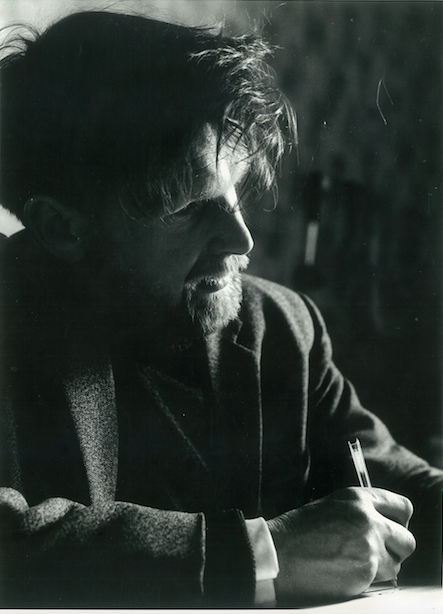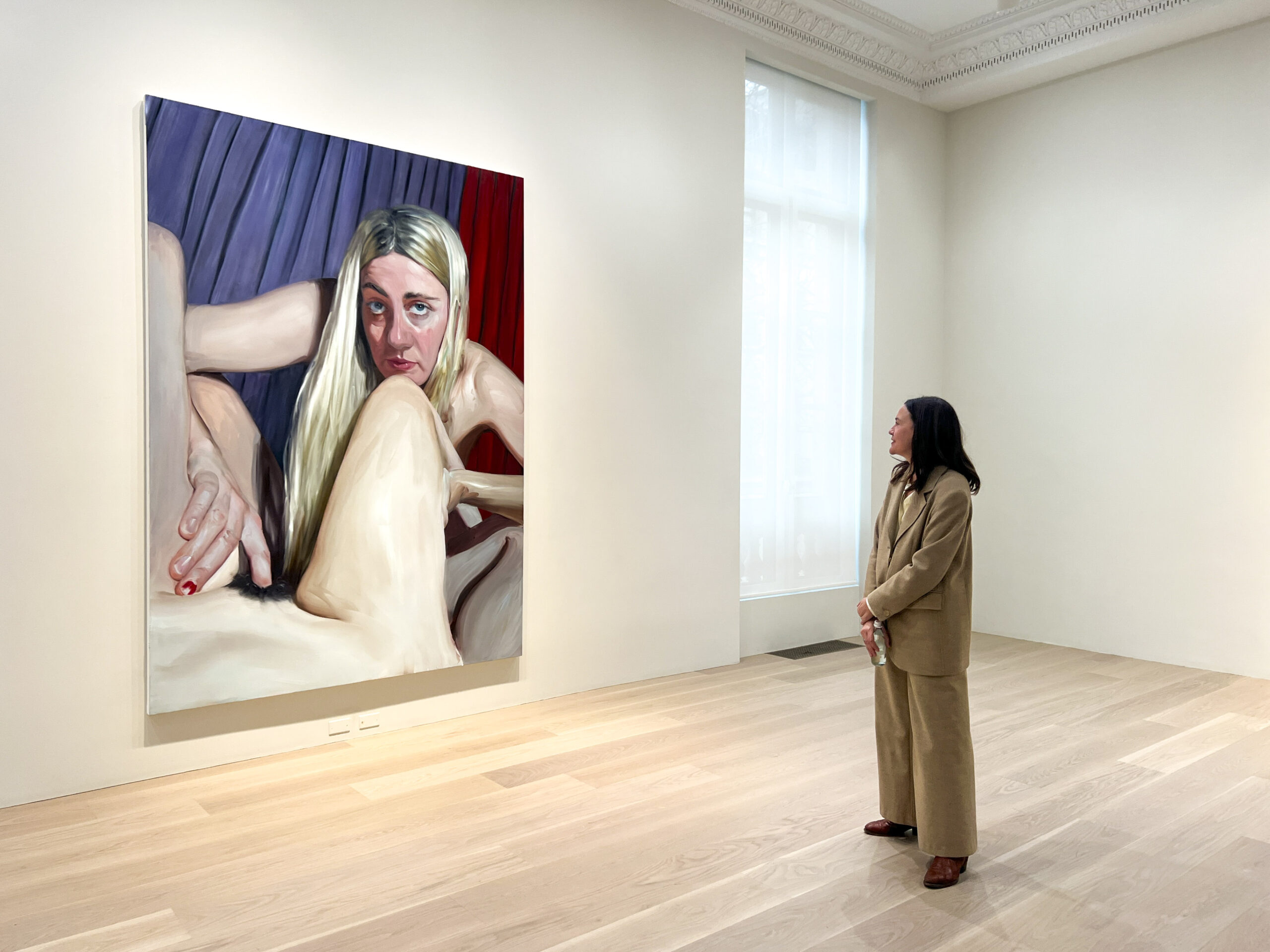
ALASDAIR GRAY AS A YOUNG MAN. PHOTO PROVIDED BY THE AUTHOR IN 2016.
Eating Oatmeal with Alasdair Gray
Valeria Stivers
January 1, 2020
In memorian
The Scottish writer Alasdair Gray died on December 29, at the age of eighty-five, four years after a fall from the outside steps of his house left him with a spinal injury that confined him to a wheelchair, and almost three years after I went to Glasgow to conduct an Art of Fiction interview with him for The Paris Review. Gray was a Whitbread Award–winning author, best known for the weird, speculative work, Lanark, an autobiographical tale in four out-of-order books (two of them nonrealist), and several volumes of short stories, but also for his painting, for illustrating his own work, and for cutting a wide and eccentric swath in the Glasgow arts scene. He was a socialist, an advocate for Scottish independence, a fierce proponent of friends’ work, and a tireless critic of the craven or pompous. Rereading my interview with him now, on the occasion of his death, I’m amazed by how cool and professional it is, and how much it leaves out, as I suppose it had to, of what Gray was really like, and what he meant to me.






























